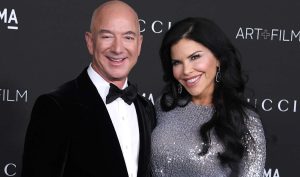What constitutes legal proof of invention?
In terms of protectability, one that maintains a higher intellectual “performance”, than another person skilled in the art, is capable of filing the patent application; this has been the case since the end of the 19th century. With entry via Art. IV No. 4 introduced § 2a Patent Act (now § 4 Patent Act) regarding the laws devised at the International Patent Convention from 21 June 1976, a codification of an inventive step for patent law occurred for the very first time: an invention ought to involve an ‘inventive step’, in case the idea is not rendered obvious by a person skilled in the art.
As a matter of fact, nothing constitutes towards “legal proof” of an invention in German Patent Law nor in European Patent Law, but rather, we have to address the question when an ‘inventive step’ in a patent claim has been reached.
The assessment of an ‘inventive step’ is a question of law which is to be judged via an evaluative appraisal of the factual circumstances which are directly or indirectly capable of indicating the conditions of the inventive step.
The other way around, to show "non-inventiveness" of the applied subject matter, the person skilled in the art needs impulses, suggestions, hints or other reasons, to end up on the subject matter claimed by the patent application in an obvious way.
In order to prove the invention as belonging to the ‘state of the art’, it is required that the person skilled in the art is able to use their obtained knowledge and aptitude that they collected during their education and vocational experience to prove they could have developed the solution in an obvious way (meaning of the subject matter being applied a patent for).
However, this solely is not sufficient; the inventor needs to have a reason why they chose that particular path/ solution to end up on the subject matter being applied for.
To what extent the person skilled in the art requires a ‘state of the art’ suggestion to further develop a known solution in a (pre)-determined way, is a question which must be evaluated in the light of the circumstances of each individual case, which requires an answer regarding a general overview of all predominant elements of fact. In such cases, explicit references are significant for the person skilled in the art.
When legal proceedings arise in this area, what evidence is needed to prove who invented the invention first?
By the time of the application of the patent, the first to file (FTF), the first to invent (FTI) as well as the first-inventor-to-file (FITF) concepts exist. FTI are legal concepts that define who has the right to the grant of a patent for an invention.
There is an important difference between the strict nature of the FTF under the European Patent Convention (EPC) (and also the German Patent Act) and the FITF system of the United States Patent and Trademark Office (USPTO). The USPTO FITF system allows early disclosers some “grace” time before they need to file a patent, whereas the EPO does not recognise any grace period, so early application under the FITF provisions is an absolute must for a later EPO patent.
Art. 60 I S.2 EPC assigns the decision about the material right to an application to the national courts. The protocol of recognition decides which court is responsible. In Germany, the right of vindication of a European patent application against a non-entitled party is by means of Art. 60 I S. 1 EPC, Art. II § 5 International Patent Cooperation Treaty enforced.
In the German Patent Law, the one that is the “actual” inventor (you could say the first inventor) could file a suit, by means of a vindication suit, before of the responsible district court. To this concern § 8 sentence 1, as well as § 8 sentence 2 of the German Patent Law are relevant.
To determine whether an entitled person can demand the transfer of a patent or the granting of a co-entitlement to it [under Sec. 8, Patent Law] and whether there is a claim to be named as (co-)inventor [under Sec. 63 (2), Patent Law], an examining comparison of the teaching applied for the patent with that whose unlawful withdrawal is claimed, is required.
For this purpose, it must first of all be examined, to what extent both teachings are identical. Whether and, if applicable, to what extent a wrongful extraction is present, it can be reliably assessed only on the basis of established similarities between the teaching which is claimed to be extracted and the teaching that is actually applied.
This is why the claim for vindication is also open to those who have completed an invention and is possibly protectable in itself, but which makes a substantial contribution to the subject matter of the application or the property right granted, provided that the invention taken is an inventive contribution, a creative contribution or a qualified contribution, to the subject matter of the application or the property right granted.
Today, an inventor can protect an invention in Europe via one or several separate national patents or single a European patent.
It would be conceivable, however, to file objections by third parties with the EPO (European Patent Office) and/or the DPMA (German Patent Office) during the grant procedure in order to prevent the "allegedly" entitled party from being granted a patent. The opposition could also be filed before the competent patent authority in order to destroy the patent.
How long do these proceedings last?
A lawsuit before the district court does not initially have a specific processing period, but the length of first instance proceedings, i.e. the proceedings before the regional court, is often limited to one to three years. Both, the plaintiff and the defendant can appeal to the responsible Higher Regional Court, whereby the duration of the proceedings can also be expected to be between one and three years.
What happens if there is not enough evidence? How can clients recover from this?
If the action before the district court and/or the appellate court is dismissed and the "evidence" has not convinced the court, the right remains with the (alleged) first inventor.
In this case, if the decision of the responsible court is legally binding, the client cannot sue twice in the same case according to § 281 ZPO. Therefore, the client cannot "recover" from this final decision of the German civil courts.
Can you share any changes you are looking out for in the patent world, especially regarding the anticipated Unitary Patent, which will impact clients?
It is clear to mention the implementation of the Unitary Patent. Unitary Patents will make it possible to get patent protection in up to 26 EU Member States by submitting a single request to the EPO. They will build on European patents granted by the EPO under the rules of the European Patent Convention (EPC), so nothing will change in the pre-grant phase and the same high standards of quality search and examination will apply. After a European patent is granted, the patent proprietor will be able to request unitary effect, thereby getting a Unitary Patent which provides uniform patent protection in up to 26 EU Member States.
Today, an inventor can protect an invention in Europe via a one or more direct national patent applications (filed with national patent offices) or via a European patent (filed with the EPO). The EPO examines applications for European patents centrally, saving inventors the costs of parallel applications at each national patent office, while ensuring a high quality of the granted patents.
However, granted European patents must be validated and maintained individually in each country where they take effect. This can be a complex and potentially very costly process: validation requirements differ between countries and can lead to high direct and indirect costs, including translation costs, validation fees (i.e. fees due in some member states for publication of the translations) and associated representation costs, such as the attorney fees charged for the administration of the patent (i.e. payment of national renewal fees). These costs can be considerable and depend on the number of countries where the patent proprietor wishes to validate the European patent.
Dr Andreas Peters
Senior Partner
Hannke Bittner & Partner | Patent- und Rechtsanwälte mbB
Prüfeninger Straße 1 | 93049 Regensburg | Deutschland | www.hannke-patent.de | mail@hannke-patent.de
Telephone 0941 – 58 62 09-0 |
Dr Andreas Peters, Senior Partner at Hannke Bittner & Partner, is a German and European Patent Attorney and has been the IP area since 2008, especially in the areas of Patent Prosecution and Patent Litigation. After having received his master’s degree in physics with honours and having graduated as a fellow of a highly recognized scholarship, he obtained his PhD in physics, to eventually attend Law School in order to become a German and European Patent Attorney.
Moreover, Dr Peters has acquired an intermediate diploma in Business Administration, as well as an intermediate diploma in Microsystems Technology, thus enabling him to advise clients not only entrepreneurially but also engineer-wise. Hitherto, he has successfully prosecuted hundreds of patent application and also operates in patent infringement trials at the Federal Patent Court, as well as at the Federal Supreme Court.





















